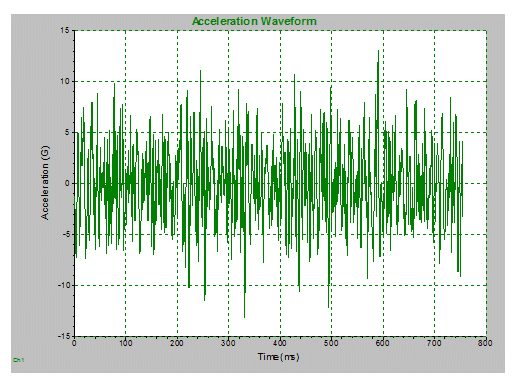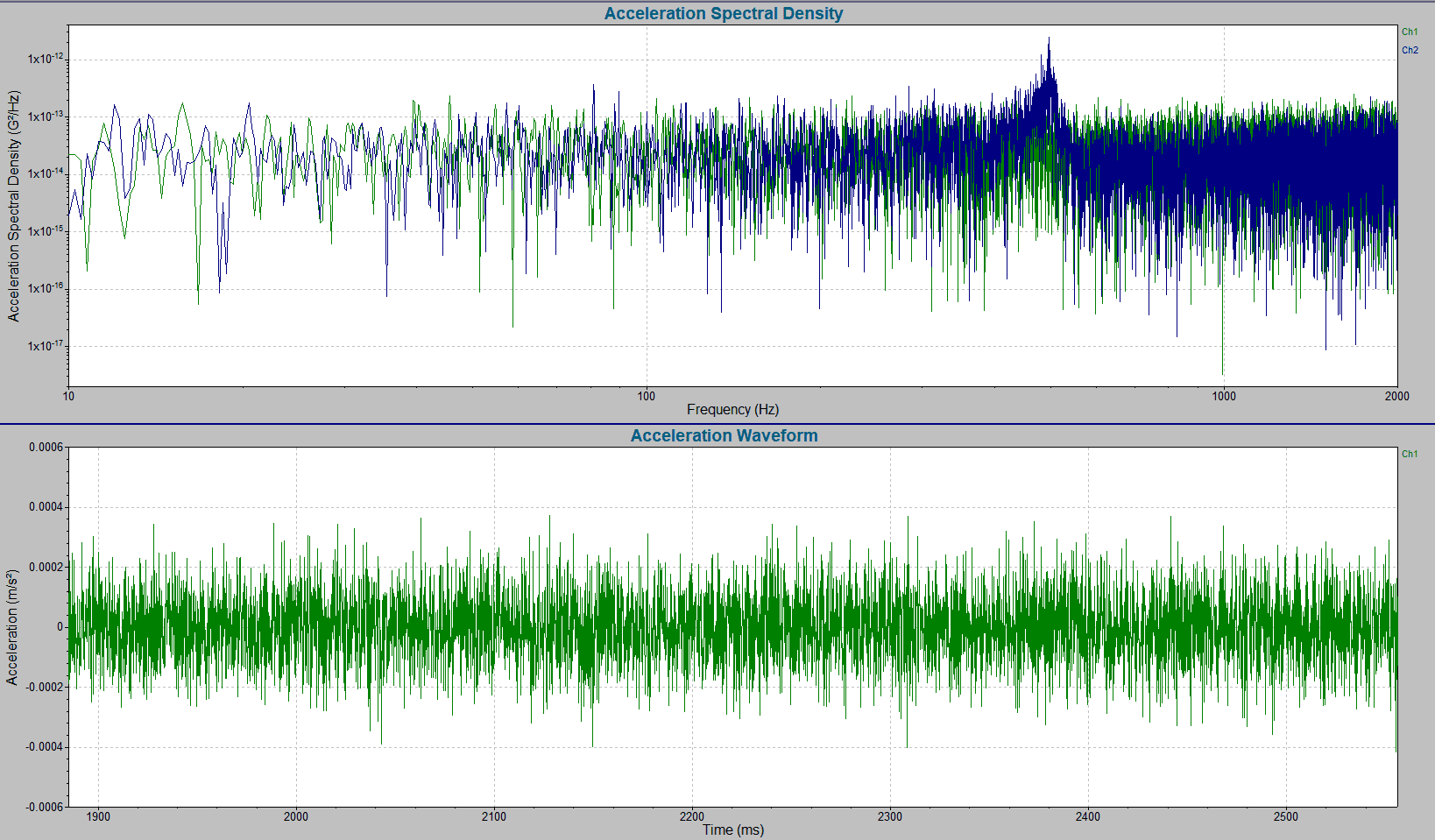Random Testing and the Power Spectral Density (PSD)
June 25, 2019
Getting Started
Power Spectral Density
Converting Recorded Data
Statistics & Probabilities
Test Control
Back to: Random Testing
Vibrations in the world around us are not repetitive or predictable like sinusoidal waveforms. They are random, so engineers often use random waveforms in vibration testing to ensure their products can withstand a realistic environment.

A random acceleration waveform.
The main reason for performing random vibration testing is to bring a device under test (DUT) to failure. Testing the DUT to failure will expose details about the device’s weaknesses and indicate ways to improve the design.
Power Spectral Density
The power spectral density (PSD) is the most common tool for analyzing random vibration. Resonances and harmonics not readily available in a time-history waveform are often visible in a PSD. In practice, generating a PSD is usually the first step when analyzing a random waveform.
Generating a functional PSD is not as simple as pushing a button in the software. Engineers set various parameters to tailor the PSD calculation to specific test requirements. For the parameter settings to be effective, the engineer must understand the underlying calculation of the PSD.
How to Calculate the PSD
The next section of this course provides the steps to calculate the PSD. These lessons will communicate critical concepts without equations and then move into a mathematically rigorous description of the PSD and related calculations.
Main Takeaways
- The function of the PSD in random vibration testing
- How to calculate the PSD using Welch’s method of estimation
If you prefer a video format, consider reviewing the following resource:
Tech Talk Video (35:24)

